#emperor Fredrick iii
Explore tagged Tumblr posts
Text

EXTREMELY rare photo of Prince Waldemar of Prussia, youngest son of Emperor Fredrick III of Germany and Victoria Princess Royal, 1878 🤍
Source: Hessian State Archives
#I legit almost fainted when I discovered this gem 🤩🥰🤍#rare#rares#hessian state archives#prussian royal family#prince waldemar#Prince Waldemar of Prussia#Waldemar of Prussia#1878#germany#kaiser Fredrick iii#emperor fredrick iii#victoria princess royal#favs
26 notes
·
View notes
Text
The 8 children of Emperor Fredrick III of Germany and Victoria Princess Royal (edit)
Wilhelm, Charlotte, Henry, Sigismund, Viktoria, Waldemar, Sophia, Margaret
(made by me using iMovie)
#should I do more of these edits?#haha I have already started making more 🤫#🩷🩵🤍#my edit#edits#video edit#prussian royal family#emperor Fredrick iii#kaiser Fredrick iii#fredrick iii#germany#kaiser wilhelm ii of germany#kaiser wilhelm ii#Victoria princess royal#crown princess victoria of Prussia#empress Fredrick of Germany#empress victoria of germany#empress of germany#princess charlotte of prussia#duchess of saxe meiningen#prince Henry of prussia#prince heinrich of prussia#prince sigismund of prussia#princess viktoria of prussia#viktoria of Schaumburg lippe#prince Waldemar of Prussia#waldemar of prussia#princess Sophie of Prussia#queen Sophie of Greece#Princess Margaret of Prussia
27 notes
·
View notes
Text


Franz Joseph, Emperor of Austria, King of Hungary, etc. Reigned 1848-1916
Challenge: Talk about his reign without talking about wife a lot (impossible)
from anon:
Dual Monarchy. HELLO.
Constitution! (Italy immediately declared war after but ya know)
Survived assassination attempts
Doesn't lose territory to Prussian unification which is something I guess
Shares 2 names with Hayden
from @minetteskvareninova:
Franz Joseph propaganda (proper):
as much of a poor little meow meow as Joseph II.
also known as Starej Procházka (ask @archduchessofnowhere I promise it's hillarious)
wholesome friendship with Katharina Schratt
was there not for a good time, but a long time certainly, and unlike queen Victoria doesn't even get the dignity of an era named after him!!!
girldad (better not ask about his son)
loved the great god Mars, even though Mars did not love him back, wore uniform all the fucking time, but his actually military record was. well. gotta love a boyfailure.
conservative in principle, but smart enough to know when to fold 'dem (which is why the former monarchy didn't end up like Russia)
from anon:
Anti-Franz Joseph Propaganda: Yes, the sideburns are iconic, but when you are a reigning emperor for 68 years and your signature facial hair is colloquially named after a minor U.S. Civil War general instead, you fumbled the bag.
anti Franz Joseph propaganda: he was an older sibling (derogatory)
from @master-of-the-opera-house:
MARRIED HIS FIRST COUSIN WHEN THEY WERE BEGINNING TO FIGURE OUT THIS HABSBURG INCEST SHIT DON'T WORK
EVEN THO THE POPE SAID NO
Sissi was a babe tho i get him BUT THEN
THEN HE GAVE HER AN STD AND TOOK A MISTRESS
Didn't drink his respect cousin-wife juice apparently
CAUSED CROWN PRINCE RUDOLF TO COMMIT
CLASSIST PIECE OF SHIT didn't allow franz ferdinand to marry sophie chotek
And then literally said "thank God" when he died
Somehow still had the people's support as a poor old man who lost everyone close to him when he either indirectly caused that or just didn't give a shit
a Leo ♌🤢
They wasted such a pretty face and such a snatched waist on such a cunt
Had he stayed alive any longer and he would've been at the negotiating table at the hall of mirrors in 1918 *shivers*
THOROUGHLY UNFUNNY """""desk bound monarch"""""" stringent for protocol """last of the old school monarchs"""" and didn't even cause any nonsense catastrophes that usually accompanies this stick up the arse
68 long monotonous years on the throne then couldn't even make 69 for the joke
Fredrick III, Holy Roman Emperor, reigned 1452-1493
Kicked off the whole tradition of being Holy Roman Emperors
#best habsburg bracket#house of habsburg#franz joseph i#i did promise twink franz joseph in the first round
61 notes
·
View notes
Text
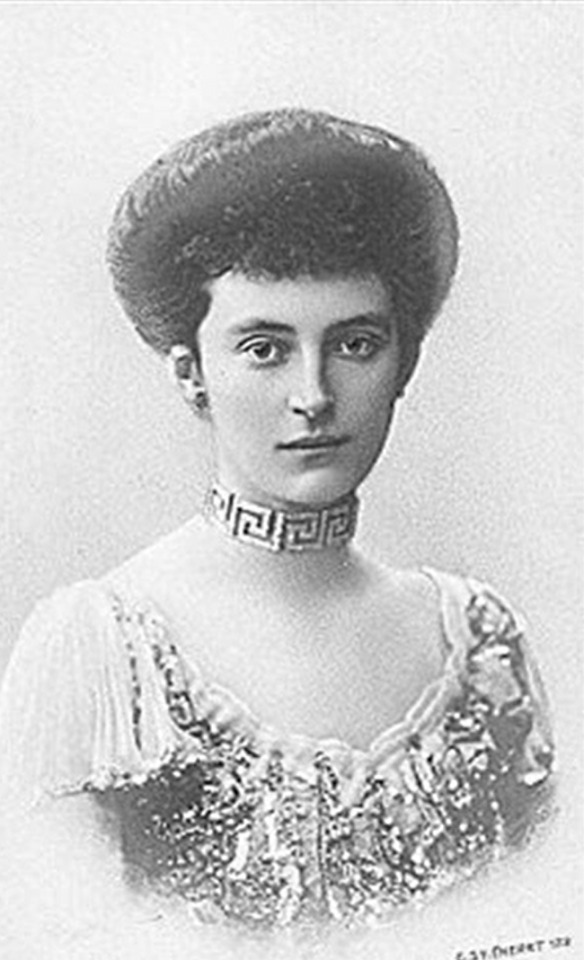
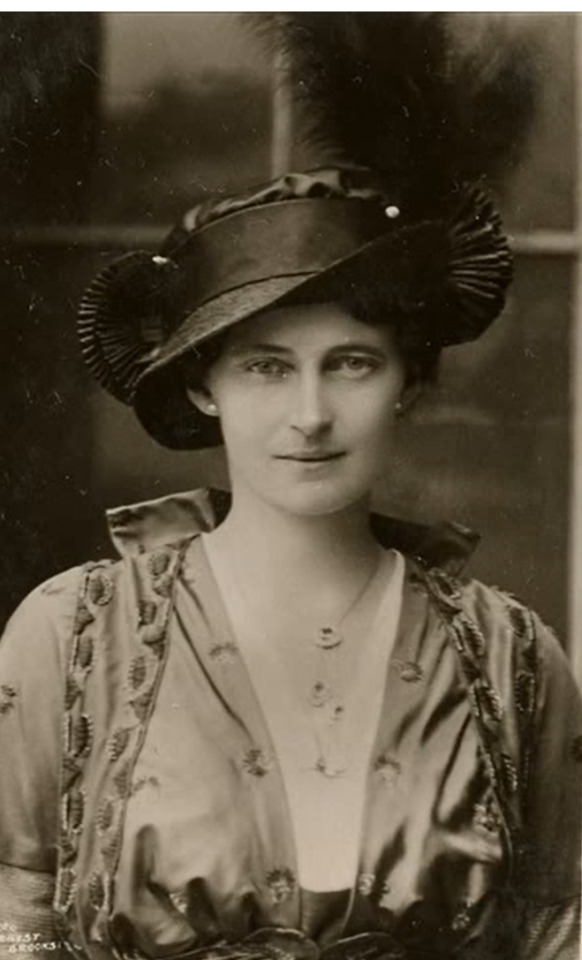
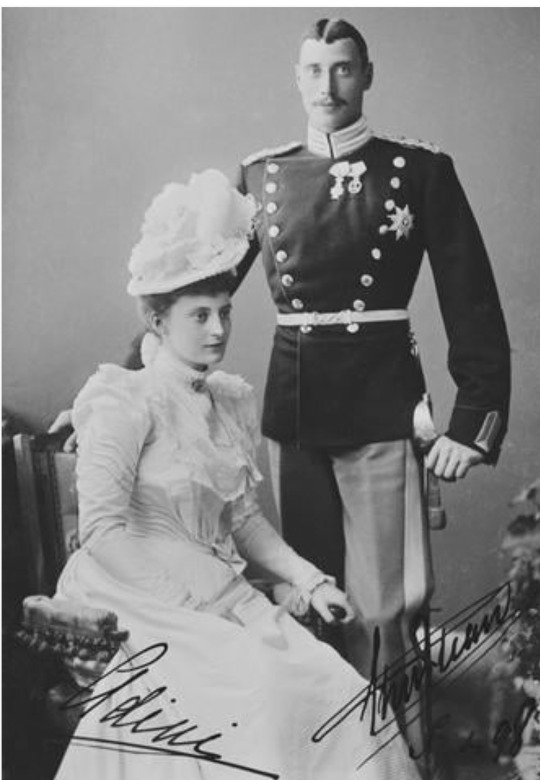
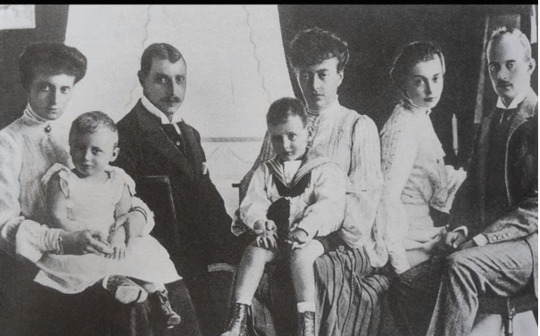
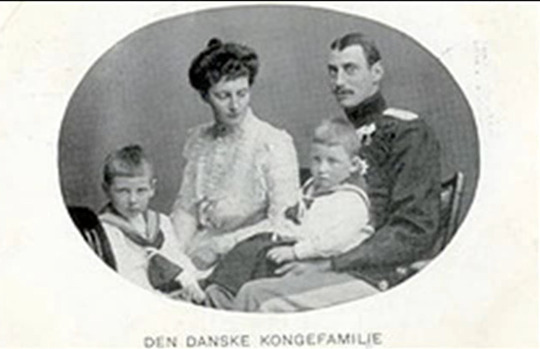

Photographs: 1 and 2: Alexandrine of Mecklenburg-Schwerin; 3. Alexandrine and Christian X; 4: From left to right, Alexandrine with her son Frederick on her lap, Christian X, Alexandrine's mother Grand Duchess Anastasia Mikhailovna (Grand Duchess Anastasia of Mecklenburg-Schwerin), Princess Alexandra of Hanover (wife of Alexandrine's brother, sitting next to her: Frederick Francis IV of Mecklenburg-Schwerin; 5: The Danish Royal Family: Queen Alexandrine, King Christian X and their 2 children: Prince Frederick and Prince Knud; 6. From left to right: Prince Knud, Queen Alexandrine of Denmark, Cecilie, Crown Princess of Germany, Christian X with his son Frederick standing in front of him, Princess Alexandra of Hanover and Grand Duke Frederick Francis IV of Mecklenburg-Schwerin
Alexandrine of Mecklenburg-Schwerin (1879 – 1952) was the elder child and first daughter of Frederick Francis III, Grand Duke of Mecklenburg-Schwerin and of Grand Duchess Anastasia Mikhailovna of Russia, a grandchild of Nicholas I (and hence the Romanov connection, which will appear at other junctions). Alexandrine was Queen of Denmark from 1912 to 1947 and Queen of Iceland from 1918 to 1944 as the spouse of King Christian X.
Alexandrine younger siblings were: Her only brother, Duke Frederick Francis, who in 1897 succeeded their father as Fredrick Francis IV, Grand Duke of Mecklenburg-Schwerin, and her only sister Duchess Cecilie, who married the German Crown Prince Wilhelm of Prussia, eldest son of German Emperor William II (but never got to reign.) So both Alexandrine and Cecilie's ancestry was mostly German but being great-granddaughters of Nicholas I (through their mother), there were certainly Romanovs (we all know that by the twentieth century the Romanovs were mostly of German descent.) Queen Alexandrine and King Christian X had two children, Prince Frederik (IX) and Prince Knud (later hereditary prince).
Queen Alexandrine played the piano to an almost professional standard. She was of a shy disposition and had difficulty getting used to public attention during her first years as queen. She preferred to avoid the media limelight but performed her functions in an exemplary manner. In the home, she was responsible for her two boys' education. Queen Alexandrine undertook extensive charity work until her death and was an avid golf player and photographer who also produced needlework to a high standard.
#russian history#imperial russia#romanov family#german royal family#duchess cecilie of mecklenburg schwerin#duchess alexandrine of mecklenburg schewerin#Cecilie#Queen Alexandrine of Denmark#King Christian X of Denmark#Frederick Francis III#Grand Duchess Anastasia Mikhailovna#Grand Duchess Anastasia of Mecklenburg-Schwerin
10 notes
·
View notes
Text
First cousins of Emperor Fredrick III of Germany and 1st cousins once removed of Kaiser Wilhelm II

Daughters of Prince Friedrich Karl of Prussia, c. 1865.
Princesses Marie, Elisabeth Anna and Louise Margaret.
23 notes
·
View notes
Photo
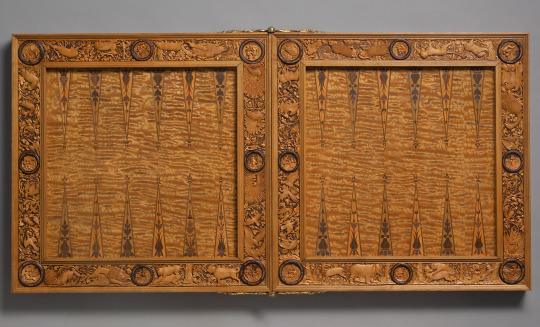
This ornate backgammon board consists of two sides, each 56 centimeters square, made of delicately carved woods of disparate types expertly fitted together. The two sides are connected by bronze hinges. The Kunsthistorisches Museum lists the wood types used in the construction of this piece as oak, nut wood, rosewood, palisander, and mahogany.
While oak is native to Europe, and the listed nut wood may be from any number of nut bearing trees, the remaining three wood types all represent the substantial cost that went into the production of this board. Most rosewoods grow natively in India and Southeast Asia, palisander is also known as “Brazilian” or “Bolivian Rosewood” and only grows naturally in the Americas, as does mahogany. The expense involved in shipping these woods across the world in the year 1537, a date of production inscribed onto the board, would have been immense, and speaks to the tremendous wealth and power of whoever commissioned the crafting of this board.
The names of three craftsmen are associated with this piece. The design and concept were drawn up by Georg Hörmann, and a draft done by Jörg Breu, a craftsman active in Augsburg, however the final product is signed by Hans Kelz of Kaufbeuren. It is possible that Breu had intended to complete the entire work himself, however he died in 1537, the year the piece was produced, so Kelz may have been given the commission after Breu’s passing.
The decoration on the board is ornate. Each of the triangular sections on the interior is inlaid with a different colored wood carved in a floral shape. The interior borders are covered in elegant scenes depicting exotic animals of all sorts, from peacocks and partridges to lions, boars, and stags. At each corner, and at the half-way point of each side, a small circle contains a delicately carved scene from classical mythology.
The exterior is equally remarkable. On each side four cameos surround a central armored figure mounted on a horse. On one side the central mounted figure is Holy Roman Emperor Charles V, the ruling emperor when this board was created. Surrounding him are four of his predecessors, all ruling men of house Hapsburg. In the upper left is the armored figure of Albert II. In the upper right is Emperor Fredrick III, cousin/successor to Albert II and predecessor/father to Maximilian I. Frederick II was also Charles V’s great grandfather. Charles’s grandfather and predecessor, Emperor Maximilian I, occupies the bottom left, and Charles’s father King Philip I of Castile sits in the bottom right.
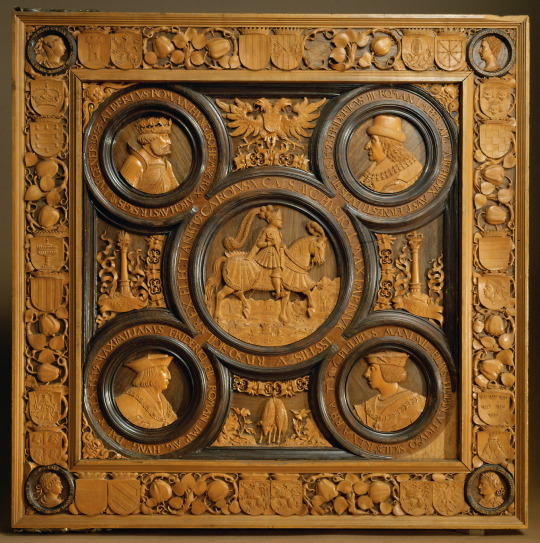
Both Maximilian and Philip are depicted wearing collars of the Order of the Golden Fleece, a prestigious knightly order founded by Duke Philip the Good of Burgundy, predecessor to Charles the Bold. The same collar encircles Charles V’s cameo. Flanking Charles are the twin pillars which support the arms of Spain, beneath them the Latin motto of the Spanish crown “Plus Ultra.” The Imperial eagle bearing the arms of the Holy Roman Emperor crowns the image.
Nestled amongst the fruits and leaves of the floral pattern on the outer edge, six coats of arms decorate each edge. These arms represent the royal claims of the Habsburg line. At each corner sits another small cameo of a classical figure; in the top left, Julius Caesar; in the top right, Augustus; in the bottom left Trajan; and in the bottom right, the Emperor Constantine.
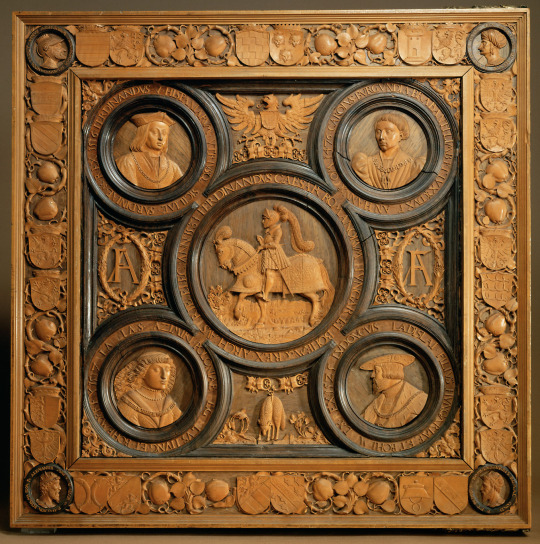
The reverse side is decorated in much the same way. The central figure is identified as Ferdinand I, Charles V’s younger brother, who was elected King of the Romans in 1531. Surrounding him (in the same order as the previous side) are King Ferdinand V of Castille and Leon, Philip’s predecessor; the famous Charles the Bold, duke of Burgundy and great grandfather to both Charles V and Ferdinand I; King Vladisvlav II of Hungary, Croatia, and Bohemia; and finally Vladislav’s son and successor, Louis II who Ferdinand I succeeded as King of Hungary, Croatia, and Bohemia in 1526.
Charles the Bold is also shown wearing the collar of the golden fleece, and once again the collar encircles Ferdinand I, who is crowned by the Imperial eagle. Rather than being flanked by the Spanish pillars however, Ferdinand is flanked by an FA monogram, Ferdinandus Anna, representing Ferdinand and his wife Anne. Also like the previous side, the outer border of this side is decorated with flowing floral motifs set with the arms of the Habsburg dynasty as well as four cameos of classical figures. These figures are Ninus, the mythical King of Assyria; Cyrus the Great of Persia; Alexander the Great of Macedon; and Romulus, mythical founder of Rome. Each of the surviving game pieces portrays a different scene from classical mythology.
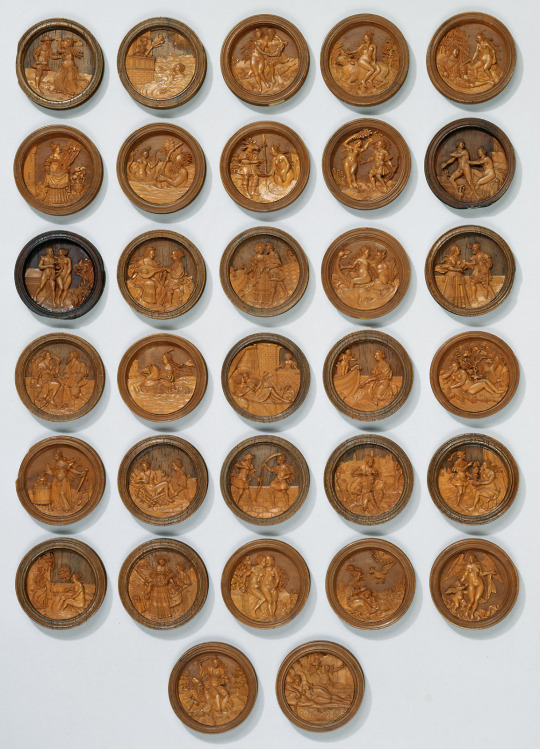
This entire piece speaks to power, not only the presence of it, but also an almost desperate attempt to legitimize it. The message is clear; the two brothers, rulers of the Holy Roman Empire sit as the centerpieces, surrounded by famous predecessors, bearers of the titles they now hold. They are wreathed in the collar of a prestigious knightly order, one that had existed for over 100 years when this board was created. The arms of their lands surround them, and the kings and emperors of old watch over them, drawing a direct line between the Roman Empire Charles ruled and the Roman Empire Julius Caesar founded. The presence of expensive woods imported from opposite ends of the world speaks to the global nature of Habsburg power. This backgammon board serves as a reminder of the immense power held by the Habsburg monarchs, the legitimacy of that power, and of how they acquired it.
One thing that cannot be said for certain about this board is who it was made for. Though the expensive woods used in its productions speak to a great degree of wealth, and the motifs suggest some connection to the court of the Holy Roman Empire, no records have yet been uncovered which can answer this question for certain. Based on the decorations which cover the exterior of the board however, I would suggest that it was made either for Ferdinand I or the Emperor himself, Charles V.
#gaming#backgammon#historical gaming#art#history#europe#european#germany#german#hre#holy roman empire#renaissance
229 notes
·
View notes
Text
Victoria I (Queen of UK of Great Britain and Ireland) (24 May 1819 – 22 January 1901)
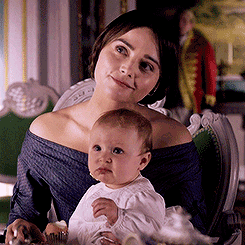
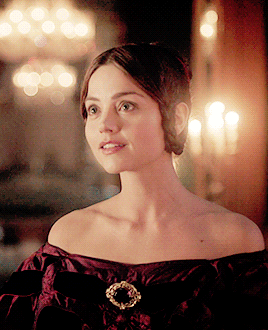
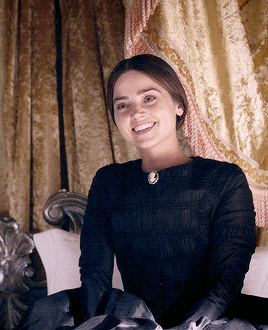
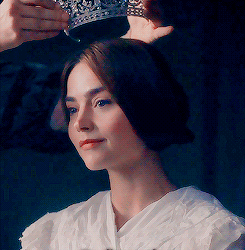
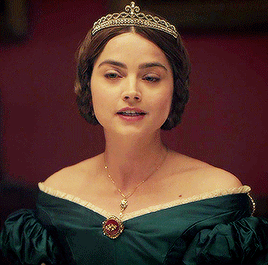
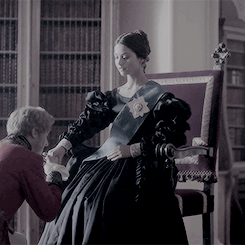

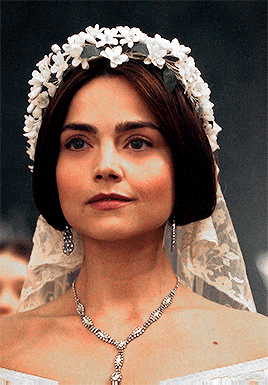

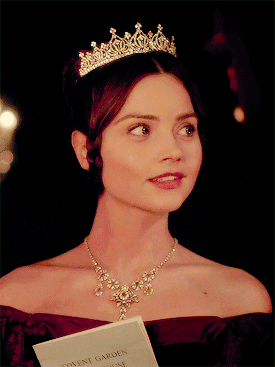
Daughter of Prince Edward (Duke of Kent and Strathearn) and Princess Victoria of Saxe-Coburg-Saalfeld.
Wife of Prince Albert of Saxe-Coburg and Gotha
Mother of Victoria (Princess Royal), Edward VII, Princess Alice, Prince Alfed (Duke of Saxe-Coburg and Gotha), Princess Louise, Princess Helena, Prince Arthur (Duke of Connaught and Strathearn), Prince Leopold (Duke of Albany), and Princess Beatrice.
Grandmother of Wilhelmina II (King of Germany and Prussia), Princess Charlotte of Prussia, Prince Henry of Prussia, Prince Sigismund of Prussia, Princess Viktoria of Prussia, Prince Waldemar of Prussia, Princess Sophia of Prussia, Princess Margaret of Prussia, Prince Albert Victor (Duke of Clarence and Avondale), George V, Louise (Princess Royal), Princess Victoria, Princess Maud of Wales, Prince Alexander John of Wales, Princess Victoria of Hesse and by Rhine, Elizabeth Feodorovna (Grand Duchess of Russia), Princess Henry of Prussia, Ernest Louis (Grand Duke of Hesse), Prince Friedrich of Hesse and by Rhine), Alexandra Feodorovna (Empress of Russia), Princess Marie of Hesse and by Rhine, Alfred (Hereditary Prince of Saxe-Coburg and Gotha), Marie of Romania, Victoria Feodorovna (Grand Duchess of Russia) Princess Alexandra of Saxe-Coburg and Gotha (Princess Consort of Hohenlohe-Langenburg), Princess Beatrice of Saxe-Coburg and Gotha (Duchess of Galliera), Prince Christian Victor of Schleswig-Holstein, Albert (Duke of Schleswig-Holstein), Princess Helena Victoria of Schleswig-Holstein, Princess Marie Louise of Schleswig-Holstein (Princess Aribert of Anhalt), Prince Harald, Princess Margaret of Connaught (Crown Princess of Sweden), Prince Arthur of Connaught, Princess Patricia of Connaught (Lady Patricia Ramsay), Princess Alice (Countess of Athlone), Charles Edward (Duke of Saxe-Coburg and Gotha), Alexander Mountbatten (1st Marquess of Carisbrooke), Victoria Eugenie of Battenberg (Queen of Spain), Lord Leopold Mountbatten, and Prince Maurice of Battenberg
Mother-in-law of Fredrick III (Emperor of Germany), Princess Alexandra of Denmark, Louis IV (Grand Duke of Hesse and by Rhine), Grand Duchess Maria Alexandrovna of Russia, Prince Christian of Schleswig-Holstein, John Campbell (9th Duke of Argyll), Princess Louise Margaret of Prussia, Princess Helena of Waldeck and Pyrmont, and Prince Henry of Battenberg.
20 notes
·
View notes
Text
The English Sandwich or La Fayette in Prussia 1785
Sooo, here is something that I wanted to write about for so long. In Prussia, King Fredrick II (better known as Frederick the Great) had begun holding annual reviews of his troops. This reviews took place in late summer and autumn and consisted of parades and mock battles. They soon became a staple event in Europe and many foreign dignitaries and high-ranking officers travelled to Prussia just to witness these review … and in 1785 one of these officers was our dear Marquis - but I let him tell the tale. He wrote George Washington a letter on July 14, 1785:
Before I leave the borders of france, I wish once more to Remind you of your absent friend, and to let You Hear that I am well and just Begining my German travels—I Have Been lately Visiting Some french towns where I Spoke grat deal about American trade (…) Now I am on my way to the deux ponts where Resides our friend the future elector of Baviera, to Cassel where I will See Again the Hessian Regiments, to Berlin where I am told lord Cornwallis is also going—from there I will wait on the King of prussia on His Grand Maneuvres in Silesia—Visit Saxony—See the austrian Camps in Bohemia—pay my Respects to the Emperor at Vienna—Return to Berlin, where grand Maneuvres are to take place at the end of September—and after I Have on My Way examined all the fields of Battle, I will Return through Holland and Be again in paris By the Middle of October
Fancy plans if I may say so. Considering that travelling was way more difficult, dangerous, expensive and uncommon in the 18th century than it is today, that is quite a roundtrip. The more important part though is that La Fayette thinks he might meet Lord Cornwallis - the same Cornwallis that La Fayette helped to defeat fair and square at the battle of Yorktown … But we are getting ahead of ourselves - because La Fayette really enjoyed his travels and he met quite a few interesting people on the way. He wrote to Washington back in Paris on February 6, 1786:
My summer has been devoted to princes, soldiers and post Horses—and while I Have Been Rambling through Cassel, Brunswick, Berlin, Breslaw, Vienna, prague dresden, potsdam Again and Berlin, no opportunity offered that I could trust, nor even any that I could Hear of—since I am returned Home, no Packet Has Sailed, and this day for the first time, I can Safely write By a Packet Boat (…) Altho’ my former letters Have Given You an Account of My journey, I must repeat to you, my dear General, that at Cassel I saw our Hessian friends, old Knip Among them, I told them they were very fine Fellows—they Returned thanks and Compliments—Ancient foes ever meet with pleasure, which However, I should think must be greater on the side that fought a successfull cause
The aforementioned “old Knip” was the Lieutenant-General Baron Wilhelm von Knyphausen, commander of Hessian troops in America during the Revolution. He was the veteran of the infamous Battle of Trenton and the Battle of Brandywine, the Battle that La Fayette himself was wounded at, and many more battles. - Oh, and yes, I think La Fayette enjoyed their meeting far more than the Baron did.
La Fayette continues describing his stay at Brunswick and Berlin before he talks about his visit to Silesia:
(…) I went to Silesia where He [Fredrick the Great] Reviewed an army of 31 Bataillons, and 75 squadrons, Making in all thirty thousand men, seven thousand five hundred of whom were on Horse Back—for eight days I made dinners of three Hours with Him, when the Conversation was pretty much Confined at first to the duke of York the King and myself, and then to two or three more—(…) lord Cornwallis being there, He took Care to invite Him at table to a seat By me, Having the British King’s son on the other side, and to Make thousand questions on American
We have a few things to unpack here. First of all, as it was expected, Cornwallis was in attendance. So far so unspectacular. But Fredrick, the Duke of York, second son of George III of Great Britain (and definitely one of his favourite children) was also present. He had departed England for Hannover to continue his military education on the mainland. He travelled to Prussia for the Manoeuvres and was the one who introduced Lord Cornwallis to Frederick the Great.
I really have to applaud Fredrick the Great for his attitude here. Placing the Duke of York, La Fayette and Lord Cornwallis all beside each other for dinner (and a dinner in the 18th century could and would easily last a few hours) and then stir the conversation towards America? That is certainly one way of handling things. Where La Fayette remarked that Frederick the Great had been “Most peculiarly Kind” to him, Cornwallis was less enthusiastic. He wrote to Lieutenant-Colonel Ross on October 5, 1785:
My reception in Silesia was not flattering; there was a most market preference for La Fayette; whether it proceeded from the King's knowing more of France, and liking better to talk about it, I know not. (…) I shall not quit Germany with much regret.
Cornwallis was really not feeling it. In their letters, La Fayette and Cornwallis both go on and describe the Prussian army in great detail. In short La Fayette was impressed but Cornwallis less so. He even called some of the manoeuvres and tactics “ridicules” at one point. La Fayette also further writes about the continuation of his travels but that is all really less interesting. Before I close this post, there is one last thing I wanted to show you. Cornwallis assessment Duke of York and La Fayette’s assessment of Frederick the Great. Both men are definitely … opinionated.
Cornwallis writes about the Duke of York:
In the first place, the Royal Person [the Duke of York] whom I saw first does not give much hopes, further than a great deal of good nature and a very good heart. His military ideas are those of a wild boy of the Guards, the uniforms and promotions of that corps, about which He is vehement to excess. One cannot, however, help loving him. There is no maintien — no distance — any impudent blackguard may be as familiar as he pleases. There is no chance of any good coming but by his being kept abroad, and of the English being kept from him.
I have read this letter so often now, and I still can not decide whether the statement is quite harsh or actually rather adorable. Nevertheless, after all that I have read about Frederick, this statement is rather accurate. Still, as someone who is quite taken with the Duke of York, I have mixed feelings in regard to this statement. But enough about that. Let us see what La Fayette writes about Frederick the Great.
I went to Make my Bow to the King, and notwisdanding what I Had Heard of Him, could not Help Being struck By that dress and Appearance of an old, Broken, dirty Corporal, coverd all over with Spanish snuff, with His Head almost leaning on one shoulder, and fingers quite distorted By the Gout. But what surprised me much more is the fire and some times the softeness of the most Beautifull Eyes I ever saw, which give as charming an expression to His phisiognomy as He Can take a Rough and threatening one at the Head of His troops (…) which gave me the opportunity to Hear Him throughout, and to admire the Vivacity of His wit, the endearing charms of His adress and politness, so far that I did Conceive people could forget what a tyrannic, Hard Hearted, and selfish Man He is (…)
Honestly, after reading the letter for the first time, I did not saw the second part coming - but I have to admit that it sounds very much like La Fayette.
#marquis de lafayette#lafayette#general lafayette#historical lafayette#george washington#frederick ii#frederick the great#frederick duke of york#charles cornwallis#battle of trenton#battle of brandywine#battle of yorktown#american history#american revolution#french history#french revolution#america#english history#english monarchy#england#prussia#austria#silesia#1785#1786#letters#military#george iii#baron knyphausen#hessian
42 notes
·
View notes
Text
Responding to Cowards
So lets respond to @kingoftheromans here real quick
If George the III was a good king..he wouldn’t have lost the Americas. That war was his to lose
If Nicholas II was a good king, he wouldn’t have lost the Russo Japanese War (a war he should have used have won), he would have been able to manage BLoody Sunday more competently by appointed actual competent representatives, and wouldn’t have lost his throne
If Lious XVI was a good king he wouldn’t have allowed Necker to mess up his economy, he would have reformed the tax system decades before 1788 when he had the chance, he wouldn’t have supported the American revolution (and failed in the subsequent treaty), he wouldn’t have fallen asleep during the royal session, he woudln’t have messed up the Estate’’s General with his constant flip flopping and he wouldn’t have screwed up the Flight to Varennes.
If Charles I was a good King, he wouldn’t have attempted The Incident, he wouldn’t have screwed up two wars, and above all he wouldn't have attempted to impose the book of Common Prayer on the Scottish. @ayeforscotland can tell you how good of an idea that was (as a rule, trying force the Scots to convert to a religion they don’t want is a very bad idea. He also would have accepted the four compromises offered to him by Parliament that would have resulted in him keeping the kingdom to say nothing of his head
If King John was a good king, he wouldn’t have ruined the economy and caused a rebellion which lead to him being forced to put limitations on his power.
If Nicholas I of Russia was a good king, he wouldn’t have utterly bungled the Crimean War and caused an internal rebellion in the problem
If Commodus was a Good Emperor, he wouldn't have single handledly ended the Golden Age of Rome
If Nero was a good Emperor, he wouldn't have economically ruined his Empire, lead to a four way civil war and gotten himself assassinated.
If Caligula was a good Emperor, he wouldn’t have economically ruined the empire and gotten himself assassinated. Oh and messed up in Germany and attacked the ocean.
If James II was a good king, he wouldn’t have gotten himself deposed in the Glorious Revolution by being generally shit.
If Peter III of Russia was a good ruler, he wouldn’t have given up to Prussia just as Russia was about to defeat Fredrick the Great, and then spent more time playing with toy soldiers rather than resist a coup.
If Paul I of Russia was a good ruler, he wouldn’t have absolutely failed on every level.
If Charles II of Spain was a good king...actually considering he was an inbreed severely disabled man with the mentality of a child....who was allowed to be king because when you based your ruler-ship on hereditary monarchy sometimes you run into
Yeah, seriously you are like “oh better genes” so what, this is a good idea?

I could go on with literally every single example on the list I gave you (because again, I clearly know monarchy better than you do) but my point is made, clearly being the child of the former ruler has a absolutely no guarantee of quality, and if you get a moron, a child, or a madmen (which happens a lot) they ruin their country.
I mean say what you will about democracy, you never get actual children running the country.
Again the US has lasted 240 years and we haven’t had a single ruler over thrown violently, which is more than any monarchy can say
76 notes
·
View notes
Text
Getting to Know Quinn McNeil
Answering ask memes without anyone sending you a message never really bothered me. Sometimes I want to answer them without any sort of prompt. Today is one of those days! I found an ask meme by cassandrapentayaaaaas for OCs and creators; not only does it look fun, but it’ll get me to understand Quinn even better! Enjoy!
1. What’s the maximum amount of time your character can sit still with nothing to do? Quinn is working towards being High Scholar in my world, which means plenty of studying. She is studious and dedicated, so she has no problems with sitting still for long periods of time. Sometimes her twin brother, Cameron, leaves glasses of water and food for her because he knows how often she forgot to take care of herself.
2. How easy is it for your character to laugh? I’d say about average. She politely giggles more than laugh, but Keandra makes her genuinely giggle all the time. Her brother, too, but she doesn’t really laugh on a regular basis.
3. How do they put themselves to bed at night (reading, singing, thinking?) More often than not, she falls asleep studying or reading. She’s basically stressed 24/7 because of school so she doesn’t really get a good full nights rest. Unfortunately.
4. How easy is it to earn their trust? She wants to see the best in everyone, but at the same time she’s the butt of a lot of jokes thanks to asshole Mervyn Fredrick Maslow III, who also wants to be High Scholar. She trusts her family, she trusts Keandra, but not many others. To her, actions speak louder than words. Show her that she can trust you, and you’re good!
5. How easy is it to earn their mistrust? She often gives second chances; she did with Mervyn at first, thinking that maybe he had an off day, that his attitude wasn’t about her but something else. But months past and he still ridiculed her. So I’d say it’s harder to earn her mistrust than her trust.
6. Do they consider laws flexible, or immovable? Oh no, rules are rules. The law is there for a reason. She is very Lawful Good. To be High Scholar, you must have a clean record because you work for the Emperor directly.
7. What triggers nostalgia for them, most often? Do they enjoy that feeling? The smell of aromatic woods, sunshine, and roses. She grew up in the Rosewood Palace because her uncle, the Emperor, is her and Cameron’s legal guardian. She also has a little drawing her brother had drawn as children that she keeps as a bookmark. It’s a picture of a the god and goddess Alistair and Nora. Unfortunately, she has nothing of her mother’s and father’s. So she’s pretty sad about that.
8. What were they told to stop/start doing most often as a child? “Be more confidant!” “Stop walking in your brother’s shadow!” “Smile more!” “Speak up!”
9.Do they swear? Do they remember their first swear word? She’s too pure for that. When she was seven she accidentally said “shit” and cried all the way to her uncle about it. (OKAY TRU STORY this happened to me and I ran all the way to my house and cried to my dad lmaooo)
10. What lie do they most frequently remember telling? Does it haunt them? Nothing seriously, to be honest. Just that she was going to bed when really she would stay up all night reading. She’s quite a truthful person, ie. question number 9!
11. How do they cope with confusion (seek clarification, pretend they understand, etc)? She keeps asking questions until she fully understands the situation/question. One of her pet peeves is misunderstanding or something not clicking.
12. How do they deal with an itch found in a place they can’t quite reach? She’d more than likely try to scratch it on the back of a chair if she’s sitting. Once, she used a fountain pen and got ink all on her back!
13. What color do they think they look best in? Do they actually look best in that color? She loves the color red, and I think she looks beautiful in the color!
14. What animal do they fear most? She’s not scared of most creatures. I mean she lives in the city, and she spends so much time in the royal library that the worst she deals with is rats. She thinks they’re cute though! I would say dragons, but they’re all extinct. And I mean truly extinct. None of that Game of Thrones Mother of Dragons stuff. HAHA.
15. How do they speak? Is what they say usually thought of on the spot, or do they rehearse it in their mind first? My poor baby rehearses everything in her mind first, unless it’s in front of Cameron or Keandra. She has a soft voice, the kind of voice you’d want to hear when you’re having a bad day.
16. What makes their stomach turn? Public speaking.
17. Are they easily embarrassed? Ho boy, is she! I’d say her face is forever red because of how much she blushes.
18. What embarrasses them? Public speaking, people saying nice things to her, getting something wrong, stumbling over words, her brother teasing her... she’s basically a walking shoujo anime girl cliche!
19. What is their favorite number? Mmm... I don’t think she has one. Maybe 10? It’s divisible by 5 and 2 which makes thing look all pretty and organized.
20. If they were asked to explain the difference between romantic and platonic or familial love, how would they do so? She’d think about it for a while. She’d probably use examples from old tales and history to help explain.
21. Why do they get up in the morning? More than anything, she wants to be High Scholar. She wants to be recognized for her dedication, intelligence, and, even though she loves her brother more than anyone else in the world, she wants to prove that she is her own person. She does not need his shadow anymore.
22. How does jealousy manifest itself in them (they become possessive, they become aloof, etc)? I feel like there are several types of jealousy. She’s jealous of her brother because she wishes she could relax like him, but she knows she doesn’t have that in her. She’s jealous of Mervyn because he’s quite charismatic, but in Mervyn’s case, I think she does things out of spite. Haha I hope that made sense!
23. How does envy manifest itself in them (they take what they want, they become resentful, etc)? I’d always felt that envy and jealousy are the same thing, so please look at question 22.
24. Is sex something that they’re comfortable speaking about? To whom? In a clinical sense, sure. She can talk about the anatomy of a penis and vagina with ease. But personally, probably not.
25. What are their thoughts on marriage? Marriage isn’t really in her plan, but she’d bawl her eyes out at a wedding!
26. What is their preferred mode of transportation? Walking. She lives in a fantasy world where advanced technology doesn’t exist. Though I am toying with the idea of trains.
27. What causes them to feel dread? Surprise surprise! Public speaking! Leaving the city, her uncle’s long speeches, and the Bridging, which is the annual oral exam all scholars must take to advance to the next grade/level.
28. Would they prefer a lie over an unpleasant truth? An unpleasant truth for sure. Quinn is stronger than she believes and can handle the ugly truth. Besides, who likes being lied to? No, no, scratch that because some of my OCs would rater a lie...
29. Do they usually live up to their own ideals? Unfortunately, no. She wants to be brave, charismatic, and outgoing, but that’s not who she is. She has very low confidence, but don’t worry! She gets there. I mean, I can’t really consider that a spoiler. She’ll learn to love herself. 30. Who do they most regret meeting? Uhm, Mervyn for sure! And this nasty slimy dude, Hayes. :) 31. Who are they the most glad to have met? Keandra!!!!!!!!!! And another OC, Naomi, Rosewood’s General of Arms!
32. Do they have a go-to story in conversation? Or a joke? No... She’s horribly awkward in conversations.
33. Could they be considered lazy? ABSOLUTELY NOT! Lazy isn’t in her vocabulary.
34. How hard is it for them to shake a sense of guilt? Extremely hard. She’s her worst critic and is very hard on herself. She’ll think about it for weeks.
35. How do they treat the things their friends come to them excited about? Are they supportive? Absolutely! If... they’re practical. If her brother came to her and said, “Quinn, I want to become Captain of the Guard!” she’d say, “Oh... Okay, but let’s think about this.” But if he said, “Quinn, I got an apprenticeship with an artist down at the Market, and I’m thinking about taking it” she’d say, “Cameron! That’s great! Who is it? What sort of art do they do? Do they have patrons? Followers? Will you need to buy your own supplies?” etc, etc... 34. Do they actively seek romance, or do they wait for it to fall into their lap? Quinn has a huge crush on Keandra, and vis versa, but romance isn’t her priority. She’d just let it happen, though they BOTH have this stupid “but they would never like me back” thought in their thick heads!
35. Do they have a system for remembering names, long lists of numbers, things that need to go in a certain order (like anagrams, putting things to melodies, etc)? She uses plenty of mnemonics.
36. What memory do they revisit the most often? There’s two! One, when she and Cameron were around five, they explored the palace, even the parts they were allowed to go. It’s the most rebellious she’s ever felt. The second, the moment she received her red shael. (Shael’s are like belts in karate, except they’re satin clothes you wear over your head. They represent the level of scholar you are - black, blue, green, red, gold, white. Cameron is green, while Quinn and Mervyn are red. Whoever earns the gold shael will be the nest High Scholar, but they do not get the white until the present High Scholar dies. I also chose black to be novice since black does not take in any color, and white as High Scholar because white takes in all colors.)
37. How easy is it for them to ignore flaws in other people? Mmm... haha. That’s one of Quinn’s flaws. It’s pretty hard to ignore someone’s flaws. She will try to correct it as nicely as she can, but it can become pretty annoying, like she’s trying to fix them into a perfect person.
38. How sensitive are they to their own flaws? Same with other’s flaws, she sensitive to her own. 39. How do they feel about children? She loves children! But, again, children just aren’t in her plan.
40. How badly do they want to reach their end goal? VERY BADLY. But not enough to kill. So maybe not that badly! HA, I’m kidding! But she does want to be High Scholar very very badly. 41. If someone asked them to explain their sexuality, how would they do so? Okay, so, to Quinn, she doesn’t really care about her own sexuality. The world she lives in doesn’t really care, but I will make it a priority to show/tell the readers that some characters are bisexual/ace/trans/etc whenever gender/sexuality is important to them, the characters. Like Keandra, she’s mtf trans and bisexual, and that’s important to her. Another character, Naomi, is aromantic ace, and that’s important to her. It’s just, Quinn doesn’t feel like it’s important. But for the sake of this question, Quinn is pansexual. I hope I made sense of this...
1. Why are you excited about this character? Absolutely! Please make more female characters like Quinn. She’s weak. It’s harsh, but it’s true. But she’s kind, smart, understanding, and she will grow into her own. I love characters like this (ie. Samwell Tarly/ Sansa Stark) because I root for them the most. And it’s nice to see a character I could relate to.
2. What inspired you to create them? This is going to sound conceded, but... me. I’m a lot like Quinn, except I am definitely not that smart and I’m a little more outgoing. But like I said above, I want more female characters who are cowards, who hide behind people when they’re scared. Because they have the most room to grow! And I will root for all of those characters until I’m six feet under!!!!
3. Did you have trouble figuring out where they fit in their own story? Nope! She was the first person I thought of. I was going to make this a 1 POV story with just her, but I love multiple POV books so much, now I have like... 5? She plays a pretty big role.
4. Have they always had the same physical appearance, or have you had to edit how they look? Oh no, she went through some editing. At first she was petite and very thin, but then I was like... SCREW THAT! Now she’s still small but stocky from holding huge books and climbing up stairs and ladders all day long.
5. Are they someone you would get along with? Would they get along with you? I think so... We’re both so a like. She’s the kind of person you feel comfortable sitting quietly with! 6. What do you feel when you think of your OC (pride, excitement, frustration, etc)? Mmm... Excited, mostly. Because I can’t wait to see her grow into such a fantastic woman!
7. What trait of theirs bothers you the most? How she always second guesses herself, and yet she wants to “fix” her friends when she notices a flaw. And how her brother has to stand up for her.
8. What trait do you admire most? Oh, her dedication for sure. That’s where we’re the opposite. I’m so lazy, but she gets so determined when she really gets her mind on something.
9. Do you prefer to keep them in their canon universe? .... Yes?
10. Did you have to manipulate or exclude canon factors to allow them to create their character? ......... Noooo??? (Is talking about fandoms? lol)
0 notes
Text
Princess or Prisoner: Mafalda of Savoy
In the age of jazz, parties and the beginning of women's lib, there's really only one thing that could make being a teenager in the roaring 20s more spectacular. Being a princess.
This last dazzling display of wealth would be the final gasp of the Gilded Age. Industry tycoons and blue blooded royals were doing as their father and grandfathers before had done, openly celebrating their status and extreme luxury. Granted, some folks didn't have clean water and Europe was still repairing from the effects of WWI, but the common people didn't have a terribly loud voice at this time. It was in this diamond encrusted bubble that Princess Mafalda was raised.
She was born the second daughter to King Victor Emmanuel III of Italy. Raised in Rome, the effects of WWI changed the extreme wealth of Mafalda's youth and by the time Mafalda entered her 20s, the political climate was promising to be kinder, and more socially aware.
This required true participation of all social classes, and Mafalda’s status as a princess was an opportunity to set the tone. As Mafalda saw it, the Monarchy would either lead the change or be swallowed up by it. These philosophies might seem a bit heavy for a girl in her early twenties, but she had survived WWI. How could she not be politically passionate? Or at least as politically passionate as one can be at a champagne lunch party while wearing 60 carats of diamonds.
This responsibility, to take care and decide what's best for the lower classes, would often be discussed at elegant state dinners and cocktails. It seems like the two ideas would be at odds, but it made sense because this gift of socialism would need to be handed out by well meaning people of power. It was only a matter of time before these gatherings became THE parties to get an invitation too. The most excited youth, artists and voices of their generation were all gathering to discuss not just any future, but their future. Many young royals of the time felt this way, and Mafalda was soon at the heart of a bright new wave of socialism that would include monarchs like Edward VIII and her soon to be husband, Prince Phillip of Hesse, the grandson of German Emperor Fredrick III.
After a brief courtship, Mafalda was the center of the European press as a fashion icon with a celebrated royal wedding. Much was made about her choice of tiara, called "The Ears of Wheat". Mafalda's style influence would become her only untarnished legacy with her own granddaughter serving as a style ambassador for Armani and currently running her own fashion house.
Along with cementing the fashion trends of the day, Mafalda's wedding cemented her role in unifying Italy and Germany, as well as her fate. At the start, Mafalda and Phillip were a couple easily adored by the press. A young modern Italian Princess and a Prince of Germany who was also a descendent of Queen Victoria and Prince Albert. Sure they lived like aristocracy, but they had a mission. To better their nations and bring social justice and equality to Europe. And no political party felt more strongly about social justice than the National Socialist Party, of which Phillip was an active and powerful member of. And no one spoke better and in a more grounded way to these beliefs than the National Socialist Party's leader, Adolf Hitler. Hindsight really is 20/20.
And so, Mafalda, the middle child and freethinker of the family, acted as a bridge between Italy's fascist movement and the National Socialist Party, which for the sake of brevity I will refer to by it's nickname, the Nazi Party. She and Philip had four children together during this period, and were the model fascist and Nazi family, even naming one of their sons Otto Adolf.
Mafalda was thrust into the German spotlight. She attended parties with Hitler and high ranking German generals, and did her part as a high society Nazi woman. At times even playing hostess. This is where Mafalda's privilege and pleasure saturated upbringing returns to seek its vengeance. While she may not have seen the concentration camps in full swing at the start of the war, Princess Mafalda was aware that they were being built, and aware of Hitler's overall plans. As the 1930's melded into the 1940's, it was getting harder and harder to pretend that Germany's success was in Italy's best interest. Thankfully, Mafalda, albeit poorly informed for most of her youth, was beginning to see through the diamond encrusted version of WWII.
While it must have been hard to admit, Mafalda and her Italian side of the family accepted that they were not on the right side of history. At least not for themselves. See after decades of allowing Mussolini to run rampant through Italy, King Victor Emmanuel III had a sneaking suspicion that Mussolini wouldn't answer to the monarchy if he achieved full power. As to how this took over a decade to comprehend, I don't know, but King Victor Emmanuel III had wisened up. His crown was next to be invaded. So after years of building a bridge between Fascist Italy and Nazi Germany, Mafalda needed to use that bridge to untangle Italy, and herself.
By 1943, Hitler began to suspect that Mafalda was a spy against him, and working with her father to undermine the Nazi agenda. In July of 1943, Mafalda's father pulled the trigger and had Mussolini arrested. He also renounced the usurped titles as King of Ethiopia and Albania, both acquired during Mussolini's influence over the Italian Monarchy.
Mafalda had more than Mussolini to worry about, her own family was being cut into two. Her father was actively trying to pull out of the Axis powers, while her husband was entangled with Nazi forces. The time to take a stance against the Axis powers was approaching faster than Mafalda could comprehend.
That September, Mafalda traveled to Bulgaria for the funeral of Phillip's Brother, King Boris III. During that trip, her father surrendered to the Allied forces, and turned sides. Mafalda's children were stashed away at the Vatican for their safety, but her husband had been placed under house arrest in Bavaria. Mafalda was trapped outside of Italy, and the veils protecting her were starting to pull back.
After being notified of Italy's alliance with Allied Forces, Mafalda was given a message that her husband was desperately trying to reach her via telephone, but could only speak on a secure line. So Mafalda went to the German embassy to speak with her husband; while there, Hitler had her arrested. She was sent to Munich, questioned and likely tortured. She had waited too long to switch sides, and was now at Hitler's mercy, of which he had none.
After her arrest by the Gestapo in September 1943, Mafalda was put on a train, but to where she could never have predicted. After being shuffled around Germany, Mafalda was sent to the Buchenwald Concentration Camp, where she became one of many numbered prisoners. We don't know much about her specific treatment in the camp, only that she was treated poorly, like other prisoners, but always kept alive as a political trading card. For those new to the topic, concentration camps and extermination camps were different things, so Mafalda's time here wasn't short. We know that she was still here in 1944. We know that she was kept in a section of housing that was adjacent to the ammunition factory, and we know that U.S. forces bombed this factory on August 24, 1944.
After over a year of silence about Princess Mafalda's whereabouts, the 30 hours after the August 24th bombing are chronicled by German sources. Mafalda is found by Nazi soldiers. The German doctors report debris covering the majority of her body, up to her neck and large areas of her body being burned. She is still alive. Princess Mafalda would endure hours of surgery and the amputation of her left arm, only to eventually die from blood loss. Her body is sent to the infamous crematoriums, but then pulled out and sent to her German family members.
Her death is never confirmed to her family in Italy until after Germany's surrender in 1945.
King Victor Emmanuel III lost the crown of Italy in the years following the war, but Princess Mafalda was never stripped of her royal status before her death or her place in the royal family of Italy.
She died as both, Princess and Prisoner.
0 notes
Text
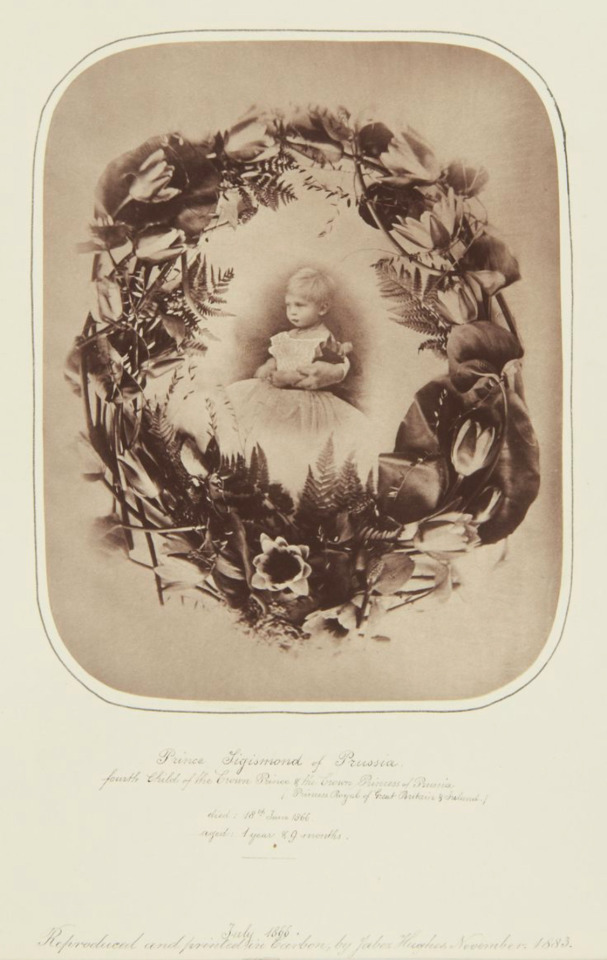
Rare photo of Prince Sigismund of Prussia (1864-1866), son of Victoria Princess Royal and Crown Prince Fredrick of Prussia, showed on a mourning card, circa 1866 ❤️🩹
#such a great rare but his story is so sad…#prince Sigismund of Prussia#Sigismund of Prussia#1866#empress victoria of germany#crown princess victoria of prussia#victoria princess royal#emperor fredrick iii#prussian royal family#1864#rare#favs#vintage#victorian#victorian era#Prussia#prince Siggismund of Prussia
17 notes
·
View notes
Text
Preliminary List of Monarchs:
Rudolph, First Archduke of Austria
Fredrick III, Holy Roman Emperor, Archduke of Austria, etc.
Maximilian I, Holy Roman Emperor, Archduke of Austria, etc.
Ferdinand I, Holy Roman Emperor, Archduke of Austria, etc.
Maximilian II, Holy Roman Emperor, Archduke of Austria, etc.
Maximilian III, Archduke of Austria, Disputed King of Poland
Rudolph II, Holy Roman Emperor, King of the Germans, Archduke of Austria, etc.
Matthias, Holy Roman Emperor, Archduke of Austria, etc.
Ferdinand II, Holy Roman Emperor, Archduke of Austria, etc.
Ferdinand III, Holy Roman Emperor, Archduke of Austria, etc.
Leopold I, Holy Roman Emperor, Archduke of Austria, etc.
Joseph I, Holy Roman Emperor, Archduke of Austria, etc.
Philip I, The Handsome, King of Castile
Charles I (V), Holy Roman Emperor, Archduke of Austria, King of Spain, etc.
Philip II, King of Spain, King of Portugal, King of Naples and Sicily
Philip III, King of Spain, King of Portugal, Naples, Sicily, etc.
Philip IV, King of Spain, King of Portugal
Charles II, King of Spain
Margret of Austria, Duchess of Savoy, Governor of the Netherlands
Mary of Hungary, Queen of Hungary and Bohemia, Governor of the Netherlands
Charles VI, Holy Roman Emperor, Archduke of Austria, Disputed King of Spain
Maria Theresa, Archduchess of Austria, King of Hungary, etc.
Joseph II, Holy Roman Emperor, Archduke of Austria, etc.
Leopold II, Holy Roman Emperor, Archduke of Austria, etc.
Franz II/I, Holy Roman Emperor, Austrian Emperor, Archduke of Austria, etc.
Ferdinand I, Emperor of Austria, King of Hungary, etc.
Franz Joseph, Emperor of Austria, King of Hungary, etc.
Maximilian of Mexico
Charles I, Emperor of Austria, King of Hungary
Maria Leopoldina, Empress of Brazil
Pedro II, Emperor of Brazil
Napoleon II, King of Rome, Duke of Reichstadt
Marie Luisa, Duchess of Parma, Empress of the French
Ferdinand III, Grand Duke of Tuscany
Leopold II, Grand Duke of Tuscany
Ferdinand IV, Grand Duke of Tuscany
Feel free to tell me who you think we are missing or to start sending in propaganda for your favorite. It will be included in the poll.
#there are some you could argue with here#and technically I have too many to make a tidy bracket#but hmmmm who to drop#also yes I did add more women so Maria Theresa wouldn't be the only one
6 notes
·
View notes